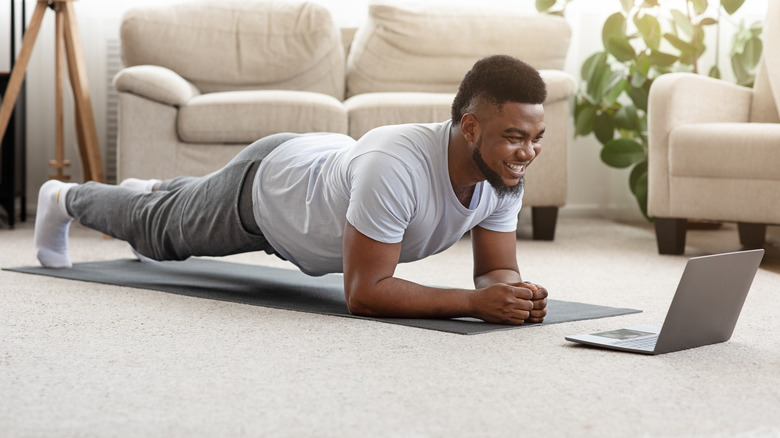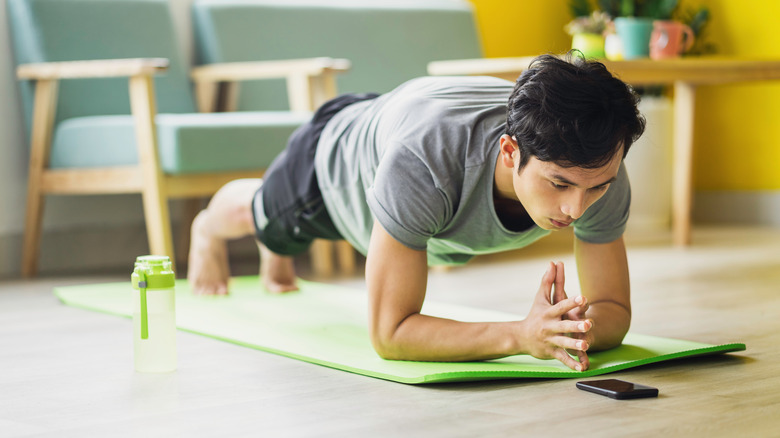You Should Never Look Up During Your Plank. Here's Why
If you've ever added planks to your workout plan in hopes of increasing your core strength, you wouldn't be the first. Planks tighten your ab muscles, and in many ways, they are considered better than crunches and situps because they work not only your abs but your arms, legs, and back, giving you an all-over workout that improves balance and flexibility, per Healthline.
Your core muscles include your abs, obliques, and transversus abdominis, and strengthening this group of muscles offers a variety of benefits other than trimming your waistline (via Cleveland Health Clinic). Performing planks on a regular basis results in these muscles becoming stronger, and that means that you're less likely to sustain an injury from performing other exercises.
One of the best things about planks is that they are easy to modify according to your fitness level. According to Cleveland Health Clinic, beginners can start by doing planks on their elbows and knees, and holding them for just a few seconds.
Proper form is critical when doing planks
Like with most exercises, if you don't practice planks with good form, you risk an injury. Keeping your body straight while in a plank is critical, and while you might be tempted to look up to check your time or form, this action can ruin your form. Looking up repeatedly can lead to neck pain and a tight upper back, according to Livestrong. To make sure your neck is in the right place, your eyes should be looking at the floor.
In addition, your hips should not be up in the air and you should not arch your lower back. You might be tempted to adjust your hips or back when your abs begin to get tired the longer you hold a plank. To avoid these mistakes, tighten your quadriceps and glutes while focusing on keeping your body in a straight line. You should also resist the urge to hunch your shoulders, which makes breathing difficult, per Livestrong. If you follow these tips, you should be able to master the plank in no time.

